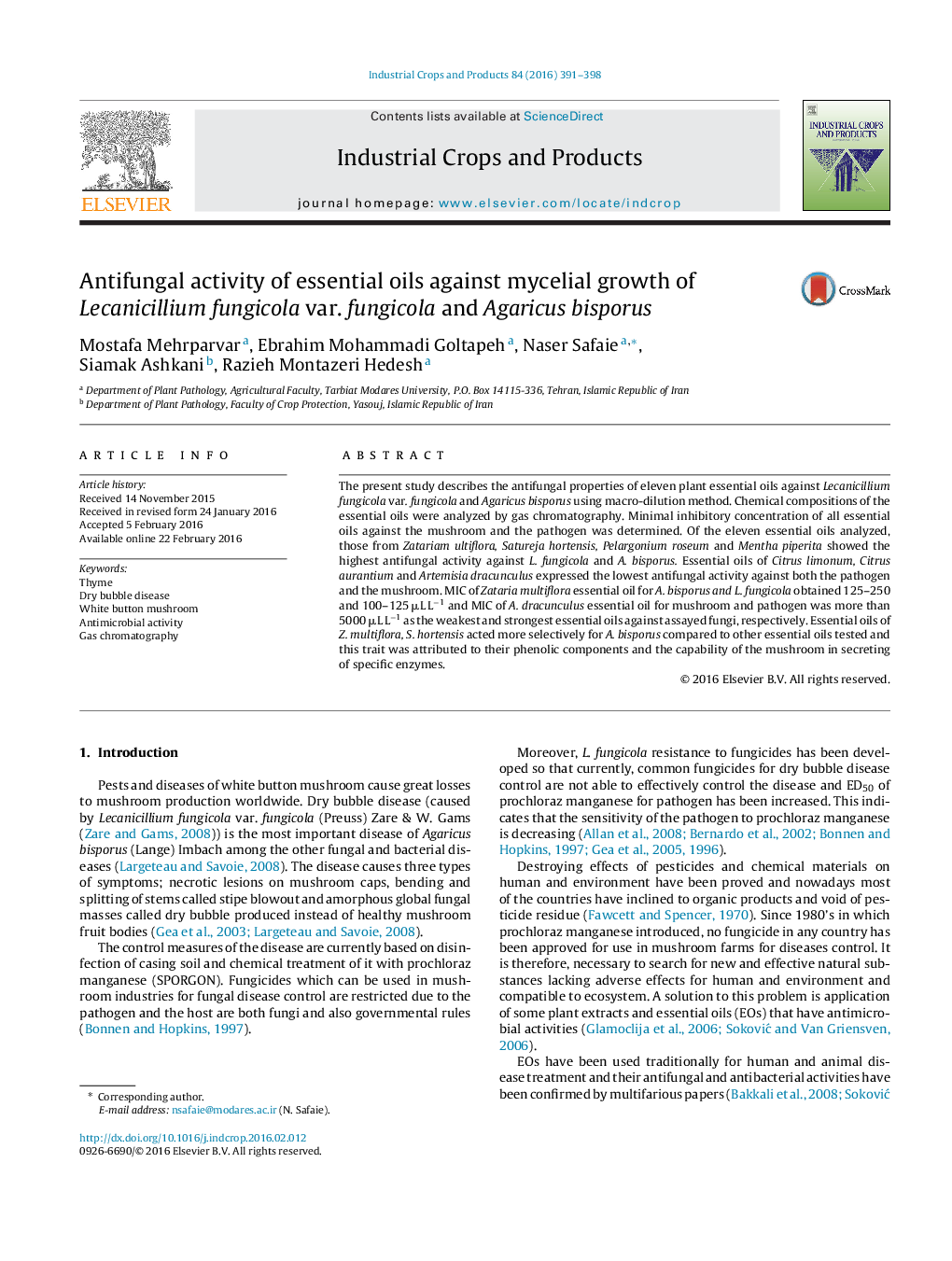| Article ID | Journal | Published Year | Pages | File Type |
|---|---|---|---|---|
| 4512393 | Industrial Crops and Products | 2016 | 8 Pages |
•Essential oils of Zataria multiflora and Satureja hortensis have the greatest inhibitory effect among a large series of essential oils.•The two essential have shown greater antimicrobial activities against Lecanicillium fungicola than Agaricus bisporus.•The two essentials acted more selectively for mushroom mycelium compared to other plant essential oils.•The production of lignolytic enzymes especially laccase is proposed to be the reason the selectivity of these two essential oils.
The present study describes the antifungal properties of eleven plant essential oils against Lecanicillium fungicola var. fungicola and Agaricus bisporus using macro-dilution method. Chemical compositions of the essential oils were analyzed by gas chromatography. Minimal inhibitory concentration of all essential oils against the mushroom and the pathogen was determined. Of the eleven essential oils analyzed, those from Zatariam ultiflora, Satureja hortensis, Pelargonium roseum and Mentha piperita showed the highest antifungal activity against L. fungicola and A. bisporus. Essential oils of Citrus limonum, Citrus aurantium and Artemisia dracunculus expressed the lowest antifungal activity against both the pathogen and the mushroom. MIC of Zataria multiflora essential oil for A. bisporus and L. fungicola obtained 125–250 and 100–125 μL L−1 and MIC of A. dracunculus essential oil for mushroom and pathogen was more than 5000 μL L−1 as the weakest and strongest essential oils against assayed fungi, respectively. Essential oils of Z. multiflora, S. hortensis acted more selectively for A. bisporus compared to other essential oils tested and this trait was attributed to their phenolic components and the capability of the mushroom in secreting of specific enzymes.
Graphical abstractFigure optionsDownload full-size imageDownload as PowerPoint slide
